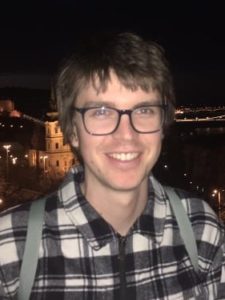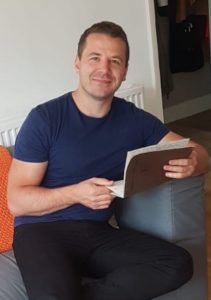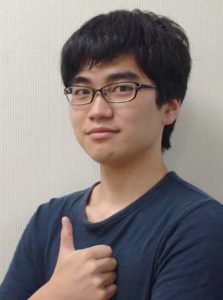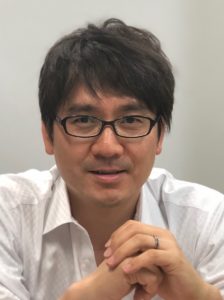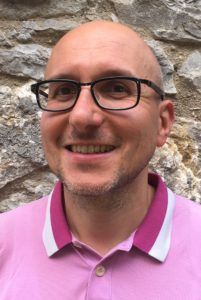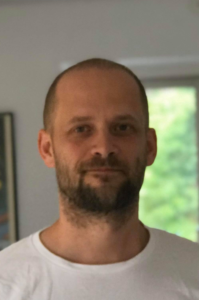Introducing the researchers:
Dr Jessica Fairhall received her PhD in 2020 from the University of Otago, under the supervision of Dr Allan Gamble and Prof. Sarah Hook. Her PhD focused on the bioorthogonal reaction between aryl azides and trans-cyclooctenes as a technique for cancer-specific prodrug activation. During her PhD she also received a 4 month fellowship to conduct research at Novartis Institutes for BioMedical Research in Emeryville California. She is currently working as a Clinical Editor for the New Zealand Medicines Formulary, and is starting a new role at the University of Otago as a Research Fellow in October.
Madoka Murayasu graduated with a BPharm (Hons) First Class in 2016 from the University of Otago. Her Honours project focused on bioorthogonal prodrug activation strategies. Madoka is currently working as a community pharmacist in New Zealand.
Dr Sumit Dadhwal completed his PhD at the University of Otago in 2018 with Dr. Allan Gamble and Prof Sarah Hook. His PhD research focused on the development of stimuli-responsive biomaterials for drug delivery applications. Currently he is working as a Research Fellow at the University of Otago.
Professor Sarah Hook is Chair of Biopharmaceutics at the School of Pharmacy, University of Otago in Dunedin, New Zealand. She received her PhD in 1996 from the Department of Microbiology and Immunology at the University of Otago. She joined the faculty of the School of Pharmacy in 2001. Research interests include the development of one-shot sustained release, particulate and responsive formulations for the delivery of small and large molecule therapeutics. Her research in the field is aided by her knowledge and experience in the fields of immunology and pharmaceutical formulation science. She has published more than 100 papers since joining the School of Pharmacy.
Dr Allan Gamble received his PhD in organic chemistry in 2008 from the University of Wollongong in Australia with Prof Paul Keller. He then moved to Canberra to take up a postdoctoral position at the Australian National University with Prof Chris Easton. Here he worked on peptide hormone regulation until late 2010. In 2011, he was awarded a Sir Keith Murdoch Postdoctoral Fellowship through the American Australian Association to work with Prof Paul Wender at Stanford University on developing new drug delivery strategies. In May 2012 he took up the position of Lecturer in the School of Pharmacy at the University of Otago and was promoted to Senior Lecturer in 2016. His research interests are in the areas of bioorganic and physical organic chemistry and drug delivery.
What inspired your research in this area?
Our research group has a strong focus in bioorganic and physical organic chemistry, and applying our skills to the development of new drug delivery strategies (prodrugs, hydrogels, nanoparticles). Over the past 8 years we have been influenced and motivated by the chemistry of Professors Carolyn Bertozzi, Joseph Fox and Marc Robillard. The initial inspiration stems from Dr Gamble’s research experience as a postdoc in the Wender group. Here he developed a passion for drug delivery and bioorthogonal chemistry. While preparing applications for an independent career in academia, Dr Gamble formulated an idea that would use the strain-promoted alkene-azide cycloaddition coupled with self-immolative linker chemistry to deliver cytotoxic drugs for cancer therapy. The alkene-azide cycloaddition appeared to have been left-out of the bioorthogonal reaction toolkit due to the formation of unstable adducts (e.g., 1,2,3-triazoline and imine), therefore providing an opportunity to establish a research group with a primary focus of developing this chemistry.
What do you personally feel is the most important outcome of your study?
Our initial work in this area (Chem. Sci. 2015, 6, 1212-1218; Bioconjugate Chem. 2018, 29, 324-334) provided proof-of-principle for the click-to-release activation of a prodrug in vitro using the alkene-azide cycloaddition. However, the physical organic chemistry components of the reaction, namely the kinetics for the click and release steps were not ideal for bioorthogonal applications in vivo. In the current study (Org. Biomol. Chem., 2020, 18, 4754-4762), we have been able to establish the fastest-to-date strain-promoted alkene-azide cycloaddition that also maintains a rapid drug release profile. The rate constants for the click and subsequent release steps pave the way for in vivo studies that will benefit from using this chemistry.
What are you going to be working on next?
We continue to work towards improving the physical organic chemistry components of the alkene-azide cycloaddition so that we can further extend its click-to-release bioorthogonal chemistry applications. Using the results of this recent study we are investigating in vivo prodrug activation in mice, and applying the alkene-azide click-to-release strategy to drug delivery systems (e.g. hydrogels and nanoparticles).
Read the full article: Tuning activation and self-immolative properties of the bioorthogonal alkene–azide click-and-release strategy
See the other articles showcased in this month’s Editor’s Collection
See all the full articles on our publishing platform














